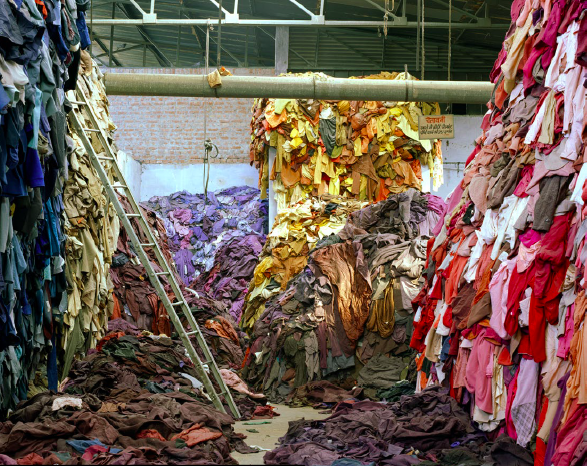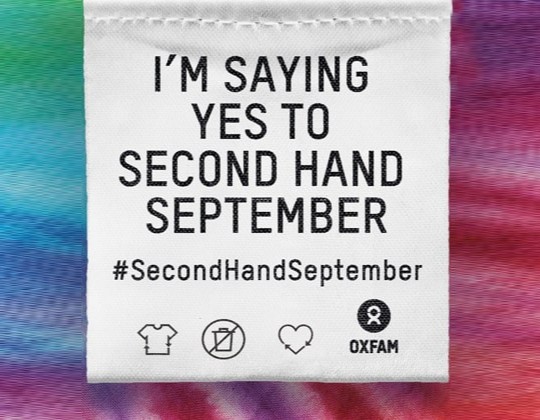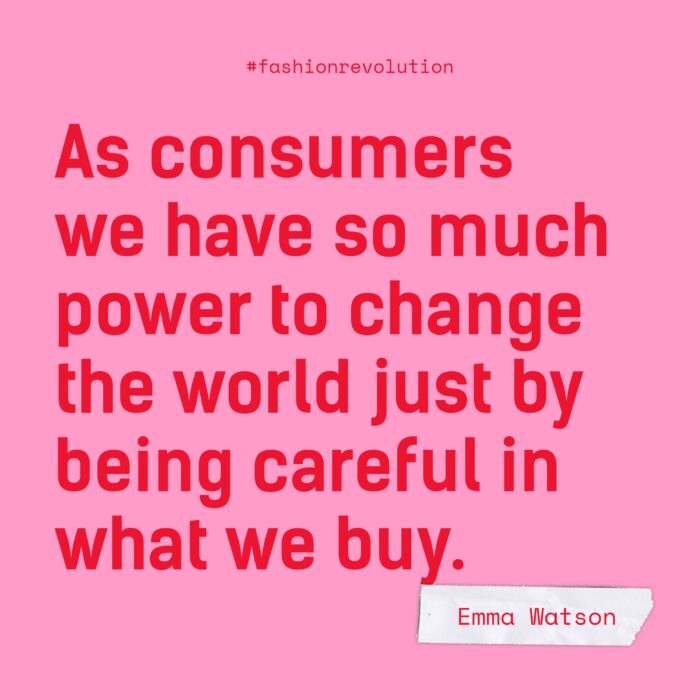How to take part in Secondhand September
Header image by Noémie Roussel on UnsplashDuring the month of September, the Secondhand September campaign puts pre-loved clothing in the spotlight, as people pledge to only buy secondhand clothing for the duration of the month. The pledge was started by Oxfam, who wanted people to rethink the month that’s usually associated with Fashion Week and encourage them to shop second-hand rather than the latest trends for the approaching Autumn/Winter season.
Shopping secondhand is a practice that has been around for centuries; once confined to local charity shops and resale merchants, thrifting was practiced predominantly by lower-income families who sourced good quality, low cost items that would last. Over time, buying second-hand clothing has gone in and out of style, with peaks including the anti-fashion punk movement of the 1970’s and the rise of alternative style in the 1990’s. Recently, pre-loved clothing has gained popularity as people strive to consume more consciously and embrace the slow fashion movement, with e-commerce platforms like Depop, Vinted and Ebay making it easier than ever to find high quality pieces at a lower price point.
There are many benefits of shopping second-hand, that are good for both your purse and the planet. By resisting temptation to impulsively stock up on new arrivals and instead opting for pre-loved items, you are not only saving money, but building a deeper relationship with fashion. When you’re no longer chasing the latest must-have items, you can break free from the trend cycle and begin to cultivate your own personal style, which is the key to reducing overconsumption.

The end of throwaway fashion
Overproduction, overconsumption and waste continues to be a growing challenge caused by the fashion industry’s ‘take, make, dispose’ model where mostly non-renewable materials are extracted, made into products, and ultimately either sent to landfill or incinerated when no longer used. While it is estimated that 100 billion products are made each year, the 2022 Fashion Transparency Index found that just 15% of brands disclose data on the quantity of products made annually, leaving us with no way of understanding the scale of the situation, let alone how to tackle it. And despite many brands championing circular solutions and use of recycled materials, the Index found that only 4% of brands disclose the percentage of products designed to enable closed loop or textile to textile recycling.
Globally, an estimated 92 million tonnes of textiles waste is created each year and, in the UK alone, of the 300,000 tonnes of clothing donated to charity annually, 80% goes to waste. The rise of fast fashion has made overconsumption and disposable clothing our new normal, but we as consumers have the power to change this. By extending the life of garments you can challenge the idea of throwaway fashion, and save clothes from landfill or incineration.

How to take part in Secondhand September
To take part in Secondhand September, first you can pledge to not buy any new clothes for the whole month; you can do this on social media with #SecondhandSeptember and join a network of conscious individuals, which will help keep you inspired and motivated throughout the month. Alternatively, you can write it down and keep it somewhere you’ll see it; on your mirror, by your bed, or even in your purse!
Once you have committed to the challenge you can only buy items that are pre-loved, but there is no shortage of beautiful, second-hand items ready to be cherished. When you first start shopping secondhand, it can be really overwhelming and hard to know where to start. So we’ve compiled a list of advice and tips that you can refer back to this month:
Tips for shopping secondhand:
- Have a clear idea of what your personal style is, so you’re not overwhelmed by options or pick items randomly
- Don’t just buy something because it is cheap, actually consider if you really love the item
- Ask yourself questions: will this item go with the rest of my wardrobe? Can I imagine it with multiple outfits? Am I willing to care for it properly?
- Get stuck in – one of the best things about thrifting is rummaging through the rails and discovering something really beautiful
- If you’d prefer to shop online, platforms like Depop, Vinted and Ebay have thousands of pre-loved clothes ready to find a new home – if you’re into vintage, you can find items on sites like Etsy and ASOS Marketplace

Challenging consumption
It’s important to remember, however, that during Secondhand September, what we’re really challenging is overconsumption. But there are many ways you can take part that don’t revolve around shopping. You could attend or host a clothes swap, exchanging your old clothes with your friends or your community to refresh your wardrobes without spending a penny. You can revisit your own wardrobe and fall back in love with your existing pieces, and rethink your personal style by reflecting on your relationship with fashion and the trend cycle. And most importantly, you can learn how to care for your clothes properly, to ensure they will last for years to come. Remember, the most sustainable item of clothing is the one already in your wardrobe.
Loved Clothes Last
Learning how to properly care for your clothes is one of the most important things you can do, as it keeps clothing in use for as long as possible. By taking the time to learn about your clothes and how to keep them looking their best, you are investing in your wardrobe and reducing your need for new clothes.
How to care for your secondhand clothes:
- It may seem obvious but – read the care label! Learn what the symbols on your clothes labels mean and take the time to care for them like the good friends they are
- Air dry – not just good for the planet but good for your clothes too! Studies show that tumble drying can cause significant damage to clothing, mainly in regards to shrinking and wearing fabric down.
- Wash less – our clothes don’t need to be washed nearly as frequently as we think. Only wash an item if it is visibly dirty and if it’s just a small stain, spot-clean it with stain remover
- Brush up on your sewing skills – we’re not expecting you to be able to create a new dress from scratch, but basic repairs such as hemming, darning, and replacing buttons can go a long way. Anything you don’t feel comfortable doing, seek out a tailor.
If you’d like to find out more about caring for your clothes, check out our Loved Clothes Last zine. We also have a Pinterest board full of care tips, sewing tutorials, and DIY inspiration for you to explore.
Further Reading
Sustainable style experts share their #SecondhandSeptember clothing love stories
Solving the secondhand sizing conundrum
How less can be more for yourself, the planet, and the people around you








